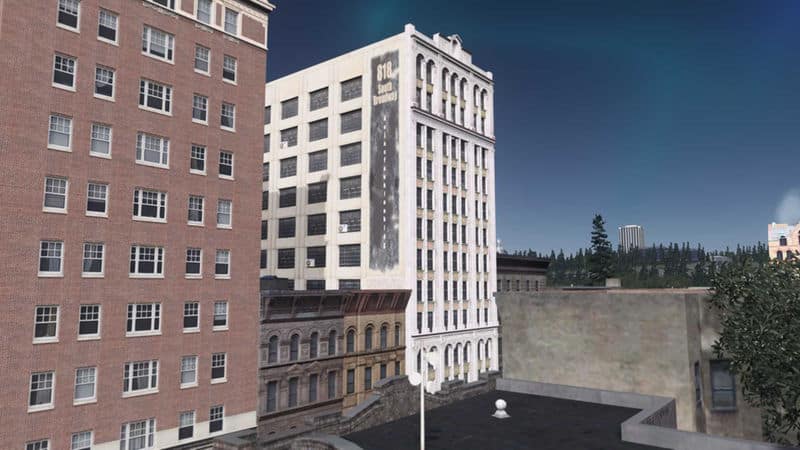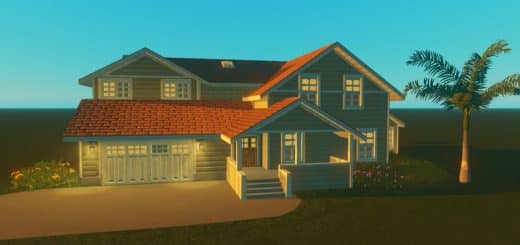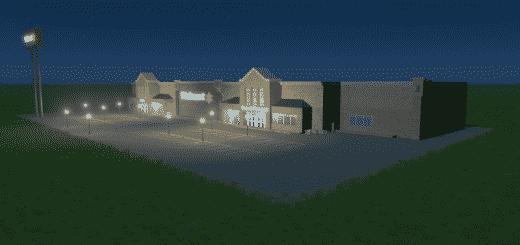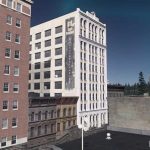
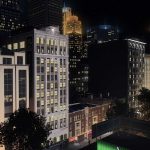


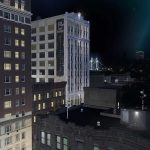

Wurlitzer Building (2×4 office lvl 3)
Please leave a vote or comment if you download this asset! This is a 2×4 Office lvl 3.
About the model
The second building of my LA series, the Wurlitzer Building has some of the finest details on a building of this city.The top part proved to be a bit of challenge as there were no pictures of it. There’s actually several Wurlitzer buildings in the US, all quite pretty. I had to unfortunately increase tris count by about 600 tris from my original model, but the triscount ain’t too bad, especially for the detail provided. ?
You can always follow my assetcreations on the Simtropolis forums: or on sketchfab:
This model has about 3085 tris and a 3072×512 texture , with a diffuse, shadow, normal, illumination and specularmap.This model has a custom LoD, which is about 104 tris with a 256×128 texture, with a diffuse, specular and illumination map.
RICO
If you want this building added to your RICO buildings, add it in the settings menu, under growables. I recommend using the realistic population mod, this will calculate the amount of occupants in the building.
About the building
The Wurlitzer was billed as “the world’s largest music house” when it was designed by Percy Walker and Alber Eisen in 1924 (the Platt Building juat down the block was also built to house music companies and had the same architects). In both buildings, one floor–according to Richard Schave of LAVA–was a concert hall, and the building was filled with practice rooms and offices.
The 13-story building would cost a million dollars to erect, and go up in six months– incredible speed, according to an LA Times story in 1923. It confirms that that there would be a large recital hall, as well as a showroom for pipe organs. And I found this interesting: even in 1924, Wurlitzer occupied the bottom four floors and basement area, but leased out the top eight floors as loft space to other concerns.
Thirteen stories was the legal limit in those days, and I believe the first floor usually encompassed a 2nd floor mezzanine, so that there was never a 13th floor.
The other tenants of the Wurlitzer included milinnary companies that sold hats and clothes, which we know because they suffered losses in fires in the 1920s. Since the building was concrete, the fires did not spread to other floors.
There’s also a Wurlitzer Building in Detroit, built two years later on a corner of Broadway in that city, and it was that building’s website that gave me a history of the Wurlitzer Company itself. The founder was Rudolph Wurlitzer, whose family had been “trading” in musical instruments since the mid-1600s. Quite a legacy. Rudolph, a recent immigrant, founded the Wurlitzer Company in Cincinnati in 1856.
The company hit its stride during the early 20th century, when it built large organs for theaters that were–at that time–showing silent films, most of them pretty short and thrilling. Organs were ideal for that sort of venue because besides simply playing Bach loud enough for the sound to fill a large auditorium, organs “could produce a variety of sounds, from banjos to harps to orchestra bells to train whistles and galloping horses.”
Changes
–

